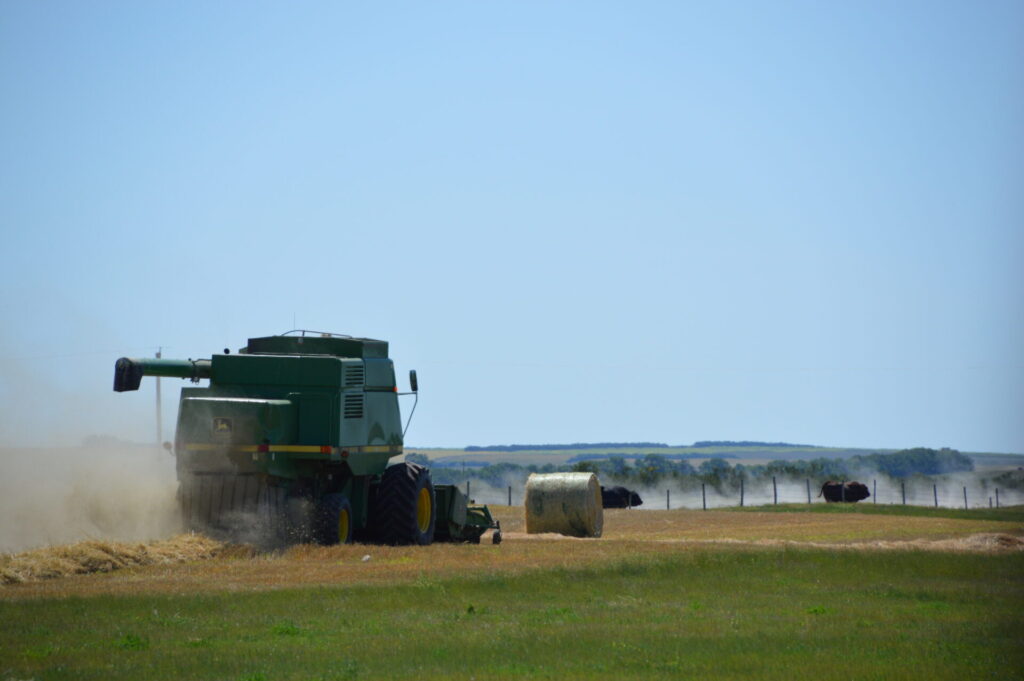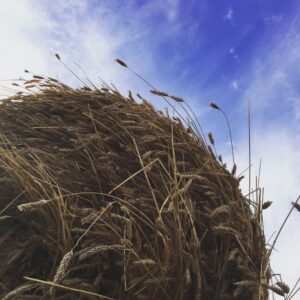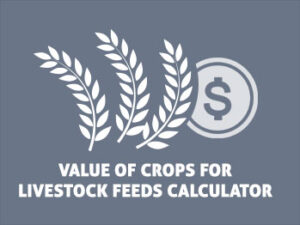Beef or Bin? Valuing Annual Crops for Feed

Beef producers may plant annual crops for the purpose of livestock feed but for many crop farmers, diverting their annual crops away from the bin and into beef requires some calculations and considerations. Given current grain prices, it is important to think through how to value feed for cattle.
A late, cool spring delayed seeding in some regions across Canada, while farmers in other areas may have seeded on schedule but with dry soil and late rains resulting in delayed crop progress. For those who had every intention of seeding and harvesting a cash crop, plans may be shifting depending on if there are enough growing days to get the crop to maturity this fall. A late frost may make harvest possible for some; but for those farmers who seeded mid-June, they could be looking to utilize those annual crops for livestock feed. This may include baling greenfeed to supplement winter feed supplies or grazing during the fall which will help beef producers provide rest to pastures.
The Value of Crops for Livestock Feeds Calculator allows beef producers to assess the value of annual crops for feed. While grazing cattle on crop land or baling greenfeed isn’t new, thinking through how to value this feed given high grain prices has been a recurring question.
If the crop is never expected to make it to harvest due to fewer growing days or potential frost damage, using the current market value for barley or five-year average yield does not necessarily apply. Over the last 30 years, there has been a 5% spread in barley high and low price. This spread tends to get wider when there is a large supply of feed barley and proportionately less malt barley around due to weather damage. In 2008 and 2009, the spread was 8-9%, and following the 2002 drought it widened from being average to 8% in 2003 and 12% in 2004. However, that spread simply assumes feed quality barley with no discount for other issues that might arise with a late seeded crop. For our examples, we are going to use an 8-12% discount off of the new crop barley price of $415-420/tonne, recognizing these prices are still fluctuating with growing conditions.

Statistics Canada reported barley yield of 43 bushels per acre in 2021, compared to a five-year average of 63 bushels per acre. Alberta Agriculture has reported average yield for greenfeed at 2.6 tonnes per acre in 2020, compared to 3.5 tonnes per acre in 2019 and the five-year average of 3.0 tonnes per acre. This does vary depending on if it is barley greenfeed (2.1 tonnes per acre in 2020, compared to 3.7 tonnes per acre in 2019), spring wheat (1.6 tonnes per acre in 2021, down from 1.9 tonnes per acre in 2019), or oat greenfeed (3.0 tonnes per acre in 2020, compared to 3.39 tonnes per acre in 2019).
Research demonstrates that seeding delays consistently reduce barley yields from 20% (3-week delay) up to 47% (5–6-week delay). Losses were greater in years and at sites with more severe drought stress. In addition, declines were more pronounced with later maturing varieties. For our examples, we are going to use a 20, 30 and 47% reduction from the five-year average greenfeed yield of 3.0 tonnes per acre.
Table 1. Assumptions for Yield Used
| Cow days per acre* | Greenfeed yield tonnes/acre | Straw tonnes/acre | Grain tonnes/acre | Grain bu/acre | Greenfeed bales/acre | |
|---|---|---|---|---|---|---|
| 5-year average | 165.3 | 3.00 | 1.6 | 1.4 | 64.3 | 4.90 |
| 20% reduction | 132.3 | 2.40 | 1.3 | 1.1 | 50.5 | 3.92 |
| 30% reduction | 115.7 | 2.10 | 1.1 | 1.0 | 45.9 | 3.43 |
| 47% reduction | 87.6 | 1.59 | 0.8 | 0.79 | 36.3 | 2.60 |
The value of the standing crop is calculated as the grain value in the bin (after combine costs of $35.63/acre) plus the nutrient value of the straw (Saskatchewan Farm Machinery Custom and Rental Rates Guide 2022-23). Straw value was calculated using $0.5678/lb N, $0.651/lb P, $0.37/lb K, and $0.2948/lb S. Table 2 shows the value of the standing crop if it was to be grazed.
Table 2. Value of Standing Crop ($/acre)
| Grain value | 8% discount ($8.36/bu) | 12% discount ($8/bu) |
|---|---|---|
| 5-year average | 582.93 | 559.55 |
| 20% reduction | 452.37 | 434.01 |
| 30% reduction | 403.79 | 387.11 |
| 47% reduction | 308.36 | 295.16 |
The greenfeed value ($/bale) shown in Table 3 takes the value of the standing crop, plus swathing costs ($15.02/acre) divided by the number of bales per acre. Bales are assumed to be 1,350 lbs for greenfeed with the number of bales per acre shown in Table 1. In addition, baling costs are $10.56/bale and transportation at $4.00/bale. This is the cost of feed to the producer, of laying in greenfeed bales assuming the above market values for the grain and straw.
Table 3. Greenfeed Value ($/bale)
| Grain value | 8% discount ($8.36/bu) | 12% discount ($8/bu) |
|---|---|---|
| 5-year average | 136.59 | 131.82 |
| 20% reduction | 133.79 | 129.11 |
| 30% reduction | 136.66 | 131.80 |
| 47% reduction | 138.93 | 133.86 |
Alberta Agriculture reported hay prices peaked in April before dropping to $253/short ton ($0.12/lb) in May 2022, making greenfeed values at $0.09-0.10/lb competitive. Regardless, exploring all options for crops that were seeded late is worthwhile.
The growing season is far from over and there are a lot of variables that can still impact forage and annual crop yields as well as grain and feed prices. Partnerships between neighbours and establishing a long-term market for feed grains that work for both cash croppers and beef producers can also present valuable opportunities and logistical benefits. Try using your own numbers in the Value of Crops for Livestock Feeds Calculator to help work through scenarios that make the most sense for your farm.
Additional Resources
- Farm Machinery Custom and Rental Rate Guide (Saskatchewan Agriculture)
- Alberta Greenfeed and Silage Production Survey Results (Alberta Agriculture)
- Seeding Delays Hurt Some Crops More Than Others (Top Crop Manager)
- 2022 Winter Forage Market Price Discovery (Saskatchewan Forage Council)
- 2022 Cost of Production for Crops (Manitoba Agriculture)
- Stored Forages (BCRC webpage)
- Grazing Annuals (BCRC webpage)
- Salvaging Damaged Crops for Livestock Feed (Verified Beef Check Off fact sheet)
- Barley Silage Calculator (Alberta Government website)
- Crop Residue Calculator (Government of Saskatchewan Download .xls calculator)
- Grain Silage Greenfeed Calculator (Government of Saskatchewan publication)
- Forage and Crop Nutrient Value Calculator (Government of Saskatchewan publication)
Sharing or reprinting BCRC posts is welcome and encouraged. Please credit the Beef Cattle Research Council, provide the website address, www.BeefResearch.ca, and let us know you have chosen to share the article by emailing us at [email protected].
Your questions, comments and suggestions are welcome. Contact us directly or spark a public discussion by posting your thoughts below.
